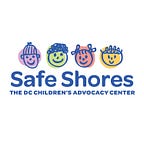What You Can Do to Help End Child Sexual Abuse
Nineteen children, to date, have said that Deonte Carraway, a Prince George’s County school aide and youth choir director, sexually abused them.
A female student has reported that a male student raped her on the grounds of Sidwell Friends, where President Obama’s children attend school.
Former House Speaker Dennis Hastert sexually abused at least four boys when he coached wrestling at a high school in Illinois decades ago, according to federal prosecutors.
It doesn’t matter if you are rich or poor, though children who live in poverty are at greater risk of being sexually abused. Status won’t protect you. These allegations show that no young child or teenager is inherently safe from sexual abuse.
So with everything that institutions and people have learned about child sexual abuse, why would a school allow a staff member to be alone with a student behind a closed door? Why are there places on campus where no one can see what’s going on?
The reason why children continue to be victimized is that we adults aren’t doing everything in our power to protect them. Imagine what the world would look like if we did everything we could to keep kids safe?
This month is National Child Abuse Prevention Month, a special time to acknowledge the importance of families and communities working together to prevent child abuse. Pinwheels symbolize the month’s mission to inspire adults to create safe, whimsical childhoods for all children at all times. So, I’m not tilting at “pinwheels” by suggesting that we can ensure that every child has a great childhood.
Individually and collectively, we would have to get creative, constantly assessing places and situations to make them as safe as possible for children. Let’s say a school employee needed to give a child a ride home, and only the two of them would be in the car. The adult and/or the child could be on a cell phone the whole time, giving a running description of the drive to the child’s parent or caregiver.
We’d also have to be prepared to expend some extra time, energy and resources. Doing everything it takes to protect children would be inconvenient. But it would be well worth it.
A starting point is Darkness to Light’s “Five Steps to Protecting Our Children.” Every adult should learn the five steps. Every institution that serves children should put policies in place that reflect the five steps and make sure the policies are enforced.
- Step One: Learn the Facts. One in 10 children will be sexually abused before the age of 18.
- Step Two: Minimize Opportunity. More than 80 percent of sexual abuse cases occur in isolated, one-on-one situations.
- Step Three: Talk About It. Bring child sexual abuse out of the dark by talking about it with adults and by talking openly with children about body safety and boundaries.
- Step Four: Recognize the Signs. Often the signs are emotional or behavioral, not physical.
- Step Five: React Responsibly. Learn how to offer support to a child who discloses abuse and report suspicion or discovery of sexual abuse immediately.
People sometimes ask how to get “bystanders” to report their suspicions of child sexual abuse. Perhaps, as a neighbor or an acquaintance, you just get the feeling that something’s not right, but you’re afraid to raise your concerns.
You may never be sure and you don’t have to be sure. If you report your suspicions, the professionals in law enforcement and child protection will follow up and find out what’s happening. You could literally be saving that child’s life.
Frankly, I reject the premise that adults can ever be bystanders. Every adult has an obligation to protect every child. They are all our kids. No one gets to opt out.
If you are still reading this piece, you probably share my views on this point.
But it’s common for adults to look the other way, explain away their gut feelings, and even disbelieve a child who reports abuse.
So let me pass it back to you and ask your opinion.
- What would you say to encourage people to speak up if they suspect child sexual abuse?
- What should organizations like Safe Shores say to inspire every adult to act to protect every child?
Please use the comments section to share your thoughts on these questions.
Since it’s National Child Abuse Prevention Month, now is a great time to take two minutes using the comments section below and help us create persuasive ways to encourage people to protect the kids. And if you want to do more, please sign up for Stewards of Children, a training developed by Darkness to Light that teaches adults how to prevent, recognize, and react responsibly to child sexual abuse. Let’s pull out all the stops and see what happens when we all do everything we can to protect children! We’ve seen the outcome when we don’t.
— — — — — — — — — — — — — — — — — — — — — — — — — — — — — — — — — — — — — — — — — — — — — — — — — — — — — —
Michele Booth Cole, J.D. is the Executive Director of Safe Shores — The D.C. Children’s Advocacy Center, a direct service nonprofit organization dedicated to supporting and working directly with child victims of sexual and physical abuse in the District of Columbia. She also serves on the Prince George’s County Student Safety Task Force, which was established to independently examine the policies and practices designed to keep students safe following the arrest of Deonte Carraway.
